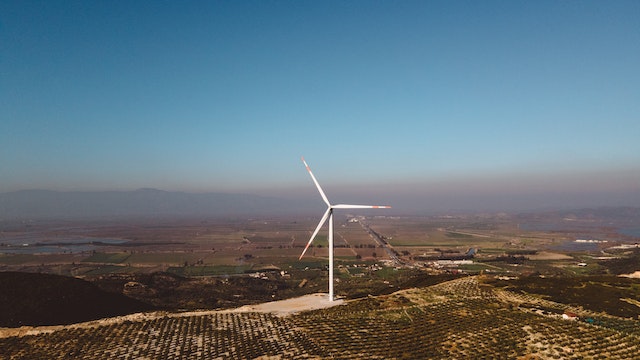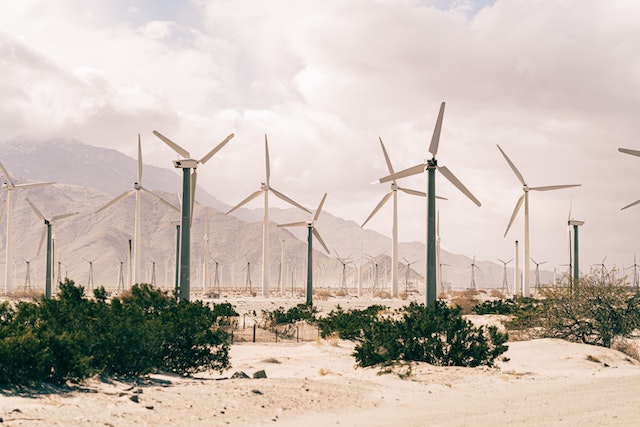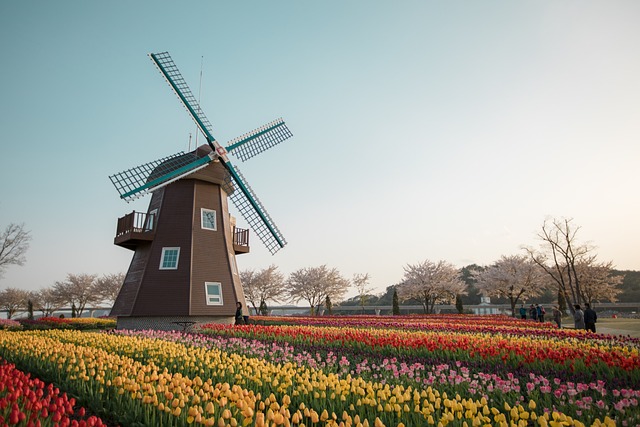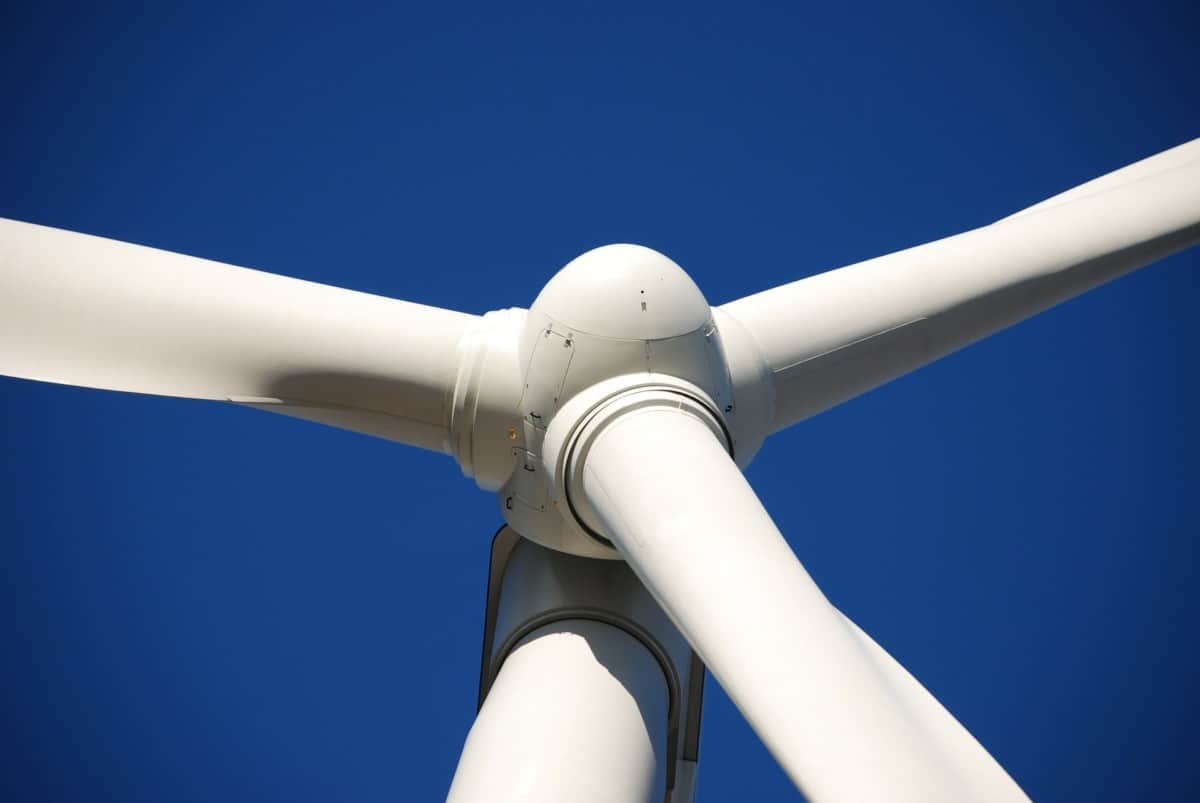How do Wind Turbines Work Without Wind
A popular question is How do Wind Turbines Work Without Wind?
Can sustainable energy also be reliable energy?
We all know that nobody can predict the weather, who knows if the wind will be blowing or the sun will be shining?
How can you count on it if you can’t predict the supply? How do wind turbines work without wind?
How do wind turbines work without wind?
Have you ever been driving on a windless day and seen the windmills turning? How can that be?
The fact is, if they are turning, there must have been some wind blowing. It could be just slightly windy; it only takes a slight breeze of to turn a turbine.
Once a turbine is going, it can take hours to slow back down, and that could explain why they are turning without wind.
They could also be drawing power from the grid to rotate the blades during cold periods of the year to prevent the blades and gears freezing up.
During this time, they are still producing a small amount of power, even though the wind that created it is long gone.
Do wind turbines need wind to work?
Yes, wind turbines need wind to create power. No wind, no power generation.
What is a wind turbine?
A wind turbine is a device that converts the wind’s kinetic energy into electrical supply. There are wind turbines of many different sizes and purposes.
Small wind turbines are used to charge batteries or provide power on boats, or for remote needs such as weather stations or traffic signs.
Larger turbines can be used for local power needs with the excess being sold back to the grid.
What minimum amount of wind speed do wind turbines need for power generation?
While just a slight breeze can eventually get a turbine moving and creating a small amount of electricity, sustainable energy experts say that a location should have an average annual wind speed of at least 9 mph.
Industry experts say that only with average speeds of 15 -25 mph can wind turbines make a profit.
For further information on how turbine wind speeds are measured go here.
Do Wind Turbines Turn To Face the Wind?

How does wind turbines work? Wind turbines utilise an anemometer and a wind vane on top of the nacelle to assess the turbine’s ideal location.
When the wind changes direction, motors spin the nacelle, and the blades along with it, to face towards the wind (this movement is termed yaw).
How does a
wind turbine work?
It works by pointing a device (usually 2 or 3 blades) into the wind and allowing the wind’s energy to spin the blades.
As the blades spin, the rotor they are attached to spin gears that are connected to an electrical generator.
The gears speed up the spin rate from the slow moving blades to the fast moving generator engine. The generator sends the electricity down the tower to be put to use.
All is explained in my article, How do Wind Turbines Work, it also has an info-graphic to help visualise the process.
The blades need to always be pointed into the wind, so in large scale wind turbines, there are wind detection systems and computers that turn the windmill to be facing the wind.
For further information on how does a wind turbine work please read my factual article explaning this called How Does a Wind Turbine Generate Electricity?
How do wind turbines store energy?
Wind turbines themselves don’t really store energy, they produce energy. That doesn’t mean the energy can’t be stored though.
Much of the energy can be simply sold back to the utility company and used immediately on the power grid.
With power lines running all across entire continents, if there is too much power locally, it can always be sold to far off places.
When power is in high demand, it can also be bought from far away sources.
Sometimes, the wind is blowing and the grid is at peak energy, or if they need to save energy for times when usage is up but the wind isn’t blowing.
There are various ways to store the energy. Batteries can be charged, and some countries in Europe are currently working to get enough giant batteries to store 30 days’ worth of energy capacity.
Other technologies include using excess energy to pump water uphill, or pull heavy train cars uphill. When released, they can create new power at a later time.
Do wind turbines supply consistent
energy without needing all that storage?

Wind farms are excellent at teaming up with other types of energy in order to produce a constant supply.
Hydroelectric energy, or dams, can hold off on releasing water on windy days and save it for times when the wind turbines are not producing, sort of covering for each other.
Solar and wind can balance out the seasonal shortfalls. In some places, solar panels produce most of their energy when its hot and the wind isn’t very strong.
In the colder months, when it is cloudy and solar is less productive, the wind tends to blow more.
What happens if the power runs out?
If there is not enough power to meet demand, than utilities companies will use what is called demand side responses.
This could be asking high power industries to stop running or turning off the power for an hour or two to allow supply to catch up with demand.
Blackouts and brownouts can happen when there is not enough power.
What other problems do wind turbines
face?
Wind turbines have an excellent track record of lasting a long time without expensive maintenance or loss of efficiency.
However, environmental factors such as debris or dead bugs can build up on the blades of turbines. Ice or snow can create drag or weigh down the blades.
This causes them to lose some efficiency. Still, studies have found a small percentage of turbines have these types of problems and even then losses in efficiency are often as small as 10%.
How fast do wind turbine spin
Wind turbines are an important source of renewable energy, and they rely on spinning blades to generate power. But just how fast do these giant turbines spin?
We will explore the speed at which wind turbines rotate, as well as the factors that influence their rotation rate.
The rate at which a modern wind turbine spins can vary greatly depending on factors like the size of the turbine, type of model, and weather conditions.
Generally speaking though, most modern turbines can spin at speeds between 10-20 revolutions per minute (RPM).
The largest commercial models may even spin up to 100 RPM or more in extremely high winds.
Wind turbine rotors are designed with special aerodynamic shapes that enable them to effectively capture wind energy, thus allowing them to reach higher rotation rates than traditional propellers used for other applications.
Can wind turbines change the weather?
In order for a wind turbine to work, the same amount of air entering the fan must also leave the fan.
The most efficient turbine possible might only use up 50% of the wind’s energy, and the turbines only cover a small fraction of the total space in a wind farm.
So, the wind entering a wind farm leaves with nearly the exact same strength as it enters it.
How Does Windmill Work

A windmill is a machine that uses the energy of the wind to generate electricity or to pump water.
Windmills have been used for centuries to grind grain and pump water. Today, they are also used to generate electricity.
Windmills work by using the wind to turn their blades, which in turn spin a generator that produces electricity.
Plus, Windmills can also be connected to a pump, which pulls water up from a well using the wind.
Windmill Parts There are two parts to a windmill: the rotor and the generator. The rotor is the part that turns in the wind. Also, the generator is the part that produces electricity.
Plus, the rotor is usually made up of a large, fan-like structure known as a rotor blade.
The blades are attached to the shaft of the windmill. When the blades turn in the wind, they spin a shaft, which turns the generator.
Hope this answers your questions; how does windmill work and how wind turbine work.
Why is wind power so popular?
In the search for clean energy, wind power might be the best option. Creating no pollution and requiring minimal materials, there is little downside to wind power.
Compared this to coal and natural gas plants which not only pollute the environment, but contribute to global warming.
Nuclear power comes with the risk of catastrophe. Even hydroelectric dams effect endangered fish.
With wind, you have a truly clean power source.
The only way to waste wind energy is to fail to harvest it.
Recent Posts
The Future of Wind Energy The future of wind energy is set to play a critical role in addressing global energy needs while combating climate change. As renewable energy sources like wind and...
Misconceptions about Wind Energy This article Misconceptions about wind energy will debunk common myths surrounding wind energy and clarify the facts based on scientific research, studies, and...



